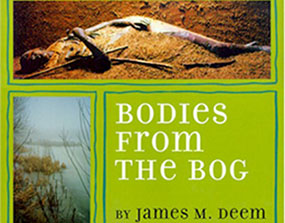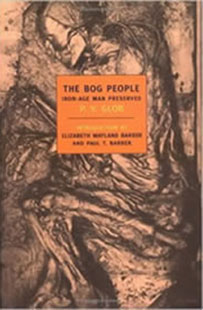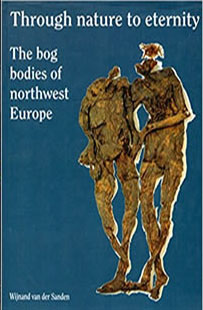Paperback edition, 2003.
|
~~ Suggestions for Visiting Bogs and Bog Bodies ~~ ~~ Bog Body Stories ~~ Related Books by James M Deem: Bodies from the Ice ~~ Bodies from the Ash ~~ ~~ |
Visiting Bogs
In some countries, you can actually tour a bog. Ireland is an especially good place to go for such a visit. At the Blackwater Bog near Shannonbridge, owned by the Bord na Móna, you can take a train ride through the bog. The visit lasts about an hour and includes a stop in the middle of the bog. There, you can see how peat is cut and even try to slice it yourself.
Of course, the Blackwater Bog is in the business of making money. It supplies milled peat to an electric company, which burns the peat (about a million tons of it each year) to produce electricity. Peat is cut by large machines, which means that humans aren't going to spot any bodies or objects (that may have been buried in the bog thousands of years ago) until they are chopped to pieces and traveling on a conveyor belt.
Another good place to learn about bogs is the Moor and Fen Museum (Moor- und Fehnmuseum) in Elisabethfehn, Germany. This special museum displays tools and machines that peat cutters have used. It also displays different types of peat, plants, and animals found in bogs. A large outdoor section provides a glimpse of an artificial bog and reconstructions of some bog trackways.
Visiting Bog Bodies
Here are a few museums that display bog bodies:
DENMARK
Copenhagen: The Nationalmuseet displays the Huldremose Woman and the Stidsholt head, both recovered in the bogs.
Moesgård: The Forhistorisk Museum (near Aarhus) displays many prehistoric artifacts recovered from the area, including a bog body called the Grauballe Man.
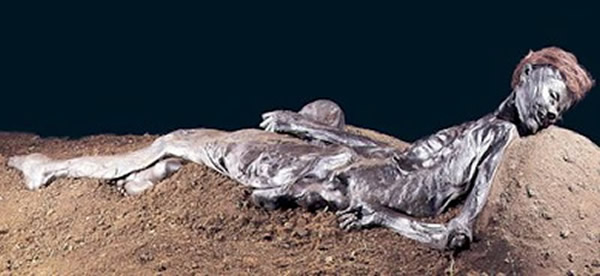
Grauballe Man, Moesgård: The Forhistorisk Museum
Odense: The Fyns Oldtid-Hollufgärd exhibits the Koelbjerg Woman, bog remains recovered in 1941.
Silkeborg: The Silkeborg Museum is famous for its outstanding exhibit of the Tollund Man, perhaps the most famous bog body in the world. Of all the bog bodies on display, this is one not to be missed.
Vejle: The St. Nicolai Church exhibits the bog remains of Haraldskær Woman, otherwise known as "Queen Gunhild."
GERMANY
Emden: The Ostfriesisches Landesmuseum displays the bog remains (primarily skeletal) and the knife sheath of Bernuthsfeld Man.
Hannover: The Niedersächsisches Landesmuseum displays Neu Versen Man sometimes called Roter Franz) and numerous bog finds. The exhibit also contains a recreation of a bog trackway.
Oldenburg: The Landesmuseum für Natur und Mensch displays Bockhornerfeld Man, Husbäke Man, and Neu England Man.
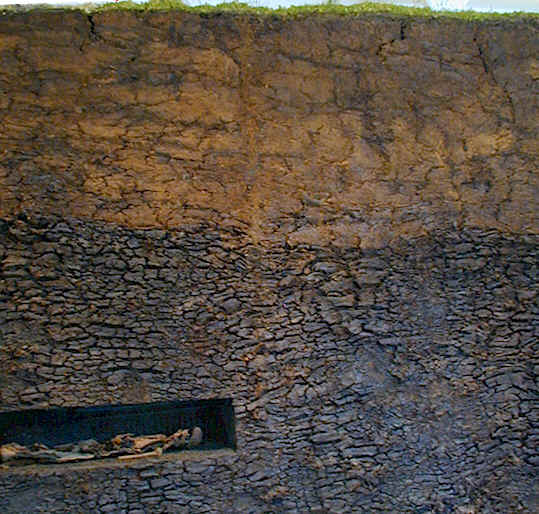
Neu England Man, Landesmuseum für Natur und Mensch
Schleswig: Landesmuseum, Schloss Gottorf displays Damendorf Man, Dätgen Man, Osterby Man, Rendswühren Man, and Windeby I.
Stade: The Schwedenspeicher-Museum exhibits a bog body known as Obenaltendorf Man; his clothing and two silver ornaments found with the body, are also on display.
IRELAND
Dublin: The National Museum of Ireland displays at least one very dry bog body named the Gallagh Man.
THE NETHERLANDS
Assen: The Drents Museum displays Emmer-Erfscheidenveen Man and the Weerdinge Men, along with Yde Girl.
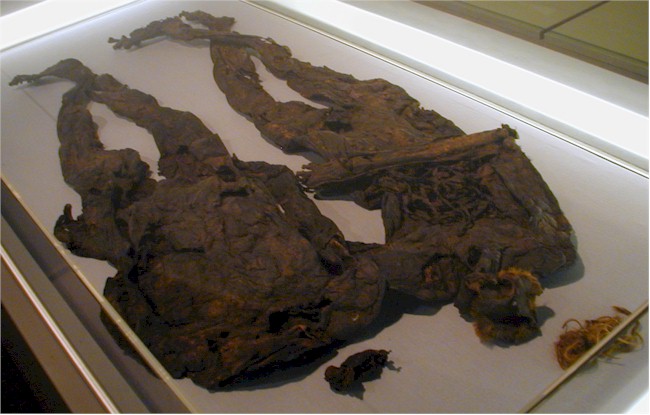
Weerdinge Men, Drents Museum
UNITED KINGDOM
London: The British Museum displays Lindow Man.

